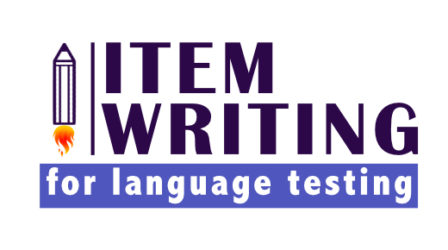
Multiple-choice (MC) items are ubiquitous; they are also well-researched with many articles and books written about them. MC items are very versatile – they can be used to test a variety of constructs.
In language testing, they are used to test grammar, vocabulary, pragmatics, reading, and listening. They are not really suitable for testing productive skills, though. Writing and speaking are better assessed through direct tests where test-takers have to produce a sample of their writing/speaking performance.
Despite their ubiquity, MC items are notoriously difficult to write. Not everyone might be aware of the difficulty, though, because on the surface a MC item is nothing more than a stem and several options. However, experience shows that many hastily written MC items do not perform well in trials (i.e. pre-testing the items on a sample of test-takers). For example, analysis of test-taker responses might reveal that a MC item does not discriminate well between strong and weak test-takers; it is too easy (or too difficult); one (or several) distractors do not work because they are obviously incorrect or, on the contrary, they can serve as the correct answer.
MC items have the advantage of all selected-response item types: they are fast and easy to mark. One their disadvantage is that they can be answered through guessing. For example, there is a 33% chance that a test-taker will guess the correct answer to a three-option MC item. This does not mean that we need to include as many distractors as possible – experience shows that it is very difficult to come up with more than two (or three) strong and plausible distractors. The 4th, 5th etc. distractor will likely be weak and/or implausible and will contribute nothing to the item because test-takers will disregard it.
Recommendations for writing MC items
- Make the stem concise but clear – avoid vague and irrelevant information.
- Make the options as short as possible – move all repeating words to the stem.

This MC item has a number of flaws: (1) its five options are too long, it will be difficult for a test-taker to keep them all in mind; (2) both options B and D can serve as the correct answer; (3) option C is vague – it’s not clear what is meant by ‘one way or the other’; (4) option D is different from the other four – it is worded as a general statement, while the other four options start with ‘She’.
- Avoid having negative sentences as stems. E.g., “What did Anna not do last night?” A better stem: “What did Anna do last night?”
- Avoid “Which of the options is not correct” as the stem.
- Make the options similar in length and form, and homogeneous in content.
The last option is two-word, and it is also the key; all other options are one-word. Test-wise candidates might choose ‘is wearing’ just because it stands out and not because they know how to use the Present Continuous tense.


Option a) is a verb while all other options are nouns.
- Keep each option consistent with the stem – test-takers should not be able to reject a distractor just because it doesn’t agree with the stem grammatically or logically.

The word ‘daily’ is used both in the stem (‘daily activities’) and as option B, which makes it weak as a distractor. All three distractors (A, B and D) are adverbs ending with ‘ly’ and derived from nouns indicating time periods (week, day, minute). The key (C) stands out from all distractors: it is a noun, and it does not belong to the same semantic group.
- All distractors should look plausible (including grammatically correct) on their own – test-takers should not be able to reject a distractor on its own merit without looking at the stem.
The last option ‘am play’ is grammatically incorrect. A test-taker does not need to know when to use Present Simple and when to use Present Continuous tense to reject this option as wrong – it is enough for the test-taker to know that ‘am’ and ‘play’ cannot go together.

- Avoid using ridiculous or humorous distractors.

Option C ‘empty-time’ is implausible as a job type so will be easily rejected even by weak test-takers.
- Avoid using ‘All of the above’ or ‘None of the above’ as options.
Items drawn from:
- English Tests Online https://www.englishtestsonline.com/
- GrammarQuiz.net https://grammarquiz.net/
Further reading
More useful recommendations for writing MC items can be found in an excellent guide ‘How to prepare better multiple-choice test items’ produced at Brigham Young University.
Jones, G. (2021). Designing multiple-choice test items. In P. Winke and T. Brunfaut (Eds.), Handbook of Second Language Acquisition and Language Testing (pp.90-101), Routledge. – A helpful overview of issues in developing MC items for language assessment.
Professor Glen Fulcher’s Language Testing Resources website has a podcast on producing MC items for language assessment.

